
Life on the road doesn’t always have clear chapters or segments.
Sometimes we might be stationary for a bit, sometimes we might be roaming around a general region for a season, sometimes we might feel we’re on a slow roll.. and sometimes we might be focused on getting from Point A to Point B.

We’ve made a lot of cross country repositionings over the years.
They may not all be full coast to coast routes, but anytime there’s a clear Point B and it’s more than about 1000 miles from our current location, we consider it a repositioning.
Sometimes we’re on a time crunch – an event we need to show up for, or a family emergency. We’re doing back-to-back long driving days with little time for exploring along the way. Our focus is just getting there. We pick the most efficient routes to minimize the time & miles. We arrive exhausted, but we’re there.
Sometimes we have time to spread the miles out a bit, and plan in some multi-day stops to mix it up, rest and recharge . We can integrate in new experiences, social time, adventures, work days and basically just living.
We arrive to our destination pretty well rested, and able to to just pick up like a normal day.
On this last repositioning from the desert southwest to Florida – we were able to spread the nearly 2000 miles out over 6 weeks. We left Arizona in mid-February, and arrived to our destination of Spring Hill, FL on April 1.
In this post, I thought I’d share some of our thoughts on how well we achieved balance.
The Route & Data Points
This is the general route we ended up taking. We didn’t pre-plan much of it before embarking from Arizona. We knew Austin would be a stop over point, but most of the other stops we planned as we went along.
Sometimes we woke up not knowing where we were sleeping that night. And sometimes we got antsy (ok, I got antsy) when we saw Spring Break creating limited options and booked reservations.
I’ve included our ‘Early Winter’ stops in the map above, as we knew when we left Desert Hot Springs we were heading to Florida for the Spring (like I said, chapters aren’t always clear!)
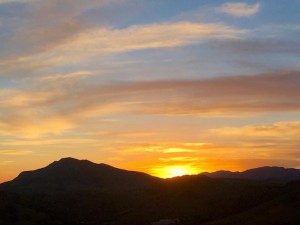
So as a recap, here are the travelogue posts that correspond to each pin in the map above:
Early Winter:
A: Hot Water, Stillness & Friends — A Perfect Stay in Desert Hot Springs
B : Another Xscapers Convergence for the History Books: Quartzsite, Arizona 2016
C: Boondocking Nirvana at Saddle Mountain BLM — Tonopah, AZ
D/E/F: Last Stops in Arizona: Tucson, Benson & Willcox
The repositioning:
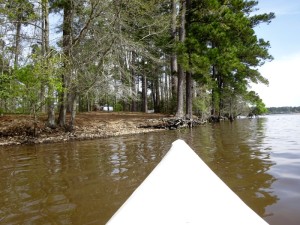
G/H/I: A Visit to Davis Mountains State Park (3 stops, 8 nights)
J: Seminole Canyon State Park — Comstock, TX (2 nights)
K/L: Stop in the Austin Area (2 stops, 10 nights)
M: Martin Dies, Jr. State Park — Jasper, TX (3 nights)
N: Fontainebleau State Park — Mandeville, LA (4 nights)
O/P: The Florida Panhandle During Spring Break (2 stops, 7 nights)
Q: Finally… Florida!! Mountain Biking at Santos Trailhead & Campground (4 nights)
R: Family Time in Spring Hill, FL — Barrington Hills RV Resort (7 nights)
A few interesting factoids about this leg:
- We had 12 distinct stops along the route. Our campground fees came out to about $900 for the 7-weeks (including the final week in Spring Hill), staying in mostly public (state and COE parks) along the way. We had 3 courtesy parking ‘dry camping’ nights (one at a Harvest Hosts, and 2 nights with friends.)
- Sure, we probably could have done a lot more free stays along the way, but we optimized for being places we could do things we wanted to do. We weren’t keen on ending long driving days trying to scout out great sites to spend a few days, in places where such places are much more rare. Averaging out at ~$18.50/night is higher than our boondocking winter, but still pretty darn cheap for amazing places.
-

Some beautiful stays! All except two stops (Austin and Spring Hill) along the route were new-to-us locations – giving us a fantastic variety of new places to explore.
- The mileage from Willcox, AZ to Spring Hill, FL was right around 2000 miles. Our average diesel economy was 7.2 mpg , and we averaged paying $1.779/gallon (SWEET!). Bringing our fuel costs to just under $500 for the trip. We made 4 fuel stops, taking on a total of 354 gallons. In all our bus years on the road, we’ve never paid so little on a cross country journey (not complaining one bit.. but also not getting used to it!).
- During the 7-weeks, we only needed to dump our waste tanks twice (once in Austin, and once upon arrival in Spring Hill) – continuing to reap the rewards of living in abundance after our unplanned tank upgrade last summer. This enabled us to just top up the fresh water at our campsites when needed. We used our water normally with no particular conservation.. and being back in humidity, that means sometimes multiple showers a day (yup, I’m a wimp.) Our new tanks are PERFECT for hopping between public parks that usually only offer water/electric sites.
Thoughts on the Balance
This has been by far one of our most enjoyable & balanced repositionings. Don’t get me wrong, we’ve had some pretty fantastic ones in the past, and we always try to make an adventure out of them.
However many of our repositionings have been too rushed.

We used to generally follow a 2-2-2 rule. Drive no more than 200 miles in a day. Get in by 2pm. And stay at least 2-nights.
As we get on up in our years on the road, that rule just hasn’t been working as well for us.
We crave being places longer, and having time to get out and be active, get in work hours and feel relaxed.
Only traveling 200 miles every couple of days was both too much motion and not enough progress for us.
After all, this year is all about balance for us!

No matter how much we minimize the take down & setup process (which for us is usually less then 20 minutes on each end) – driving days take effort.
We tire of moving things off counters, airing up the bus, securing movable items, doing our pre-drive checks, being on guard for a mechanical failure, navigating traffic, hitching/unhitching the MINI, backing into and leveling, getting our stuff out and put away, and just everything else that goes into moving days.
So instead, we decided to try minimizing driving days by making more miles with each. Many of our drives this time were more in the 250-300 range – still a comfortable range.

Sometimes we’d pull two driving days in a row with just an easy in/out overnight stay in-between.
But then we stopped multiple days in locations to focus on just living. This allowed us to get out biking, kayaking, exploring our area, meeting up with friends and keeping on top of work.
All and all, we did much more exploring and living at each stop than we ever have! And you know what… I LIKE IT!
Workwise, we were able to perform extensive cellular antenna testing at 5 different locations (each takes a full day plus), so we can keep our Mobile Internet Aficionado premium members advised on what actually works best in the field.
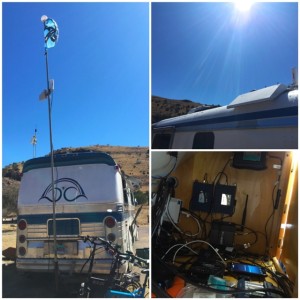
Overall this proved to be a wonderful recipe for balance. As a driving day was wearing on, we kept motivated knowing we had several days ahead of stillness. And we loved watching the distance to our destination significantly close in with each move.
The route we took through Texas – keeping south of I-10 in the west, and north of it in the east – was also one of the most pleasant driving experiences to date across this huge state. Minimal traffic, no active oil fields and great scenery. And overall, it only added about an extra 150 miles to taking the direct route via interstates.
We consider this crossing a HUGE success for us!
Will we be able to do this everytime we need to make miles? No always. We’ll always approach each journey for its unique characteristics, and try to find the best balance.
Planning A Day’s Drive
Some folks prefer to have each segment planned out in advance (me) and some prefer to have nothing planned at all (Chris). We shared how we balance this out during a live video cast broadcast while we were in the New Orleans area, right in the midst of this repositioning.
We also shared a bunch of our tips and tricks for finding campgrounds, routing, navigating and keeping appraised to upcoming challenges (such as the flooding in East Texas that nearly preventing us from crossing the Sabine River).
Here’s the archive of that video chat if you’d like to learn more about how we go about Planning a Day’s Drive (bandwidth caution: it’s over an hour long):
If you’re not into video, a lot of the content came from these two articles:
- Guide to finding campgrounds: https://www.technomadia.com/findcamping
- Guide to RV Mobile Apps we Love: https://www.technomadia.com/rvapps
So that’s that.
What pace have you found works for you? Any other tips on planning a cross country journey in your travels that keeps you sane?
Special Note: We’re heading into ‘vacation’ right now, and may not respond to comments for several days. Thanks

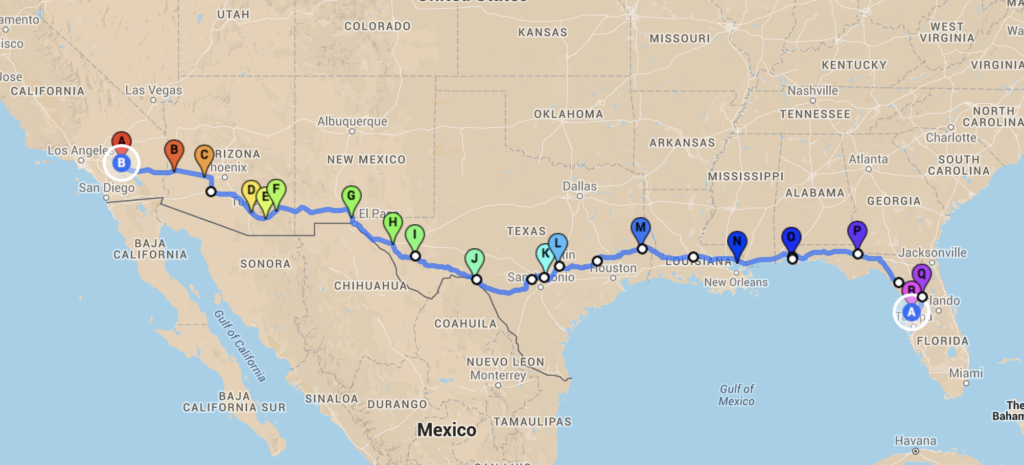
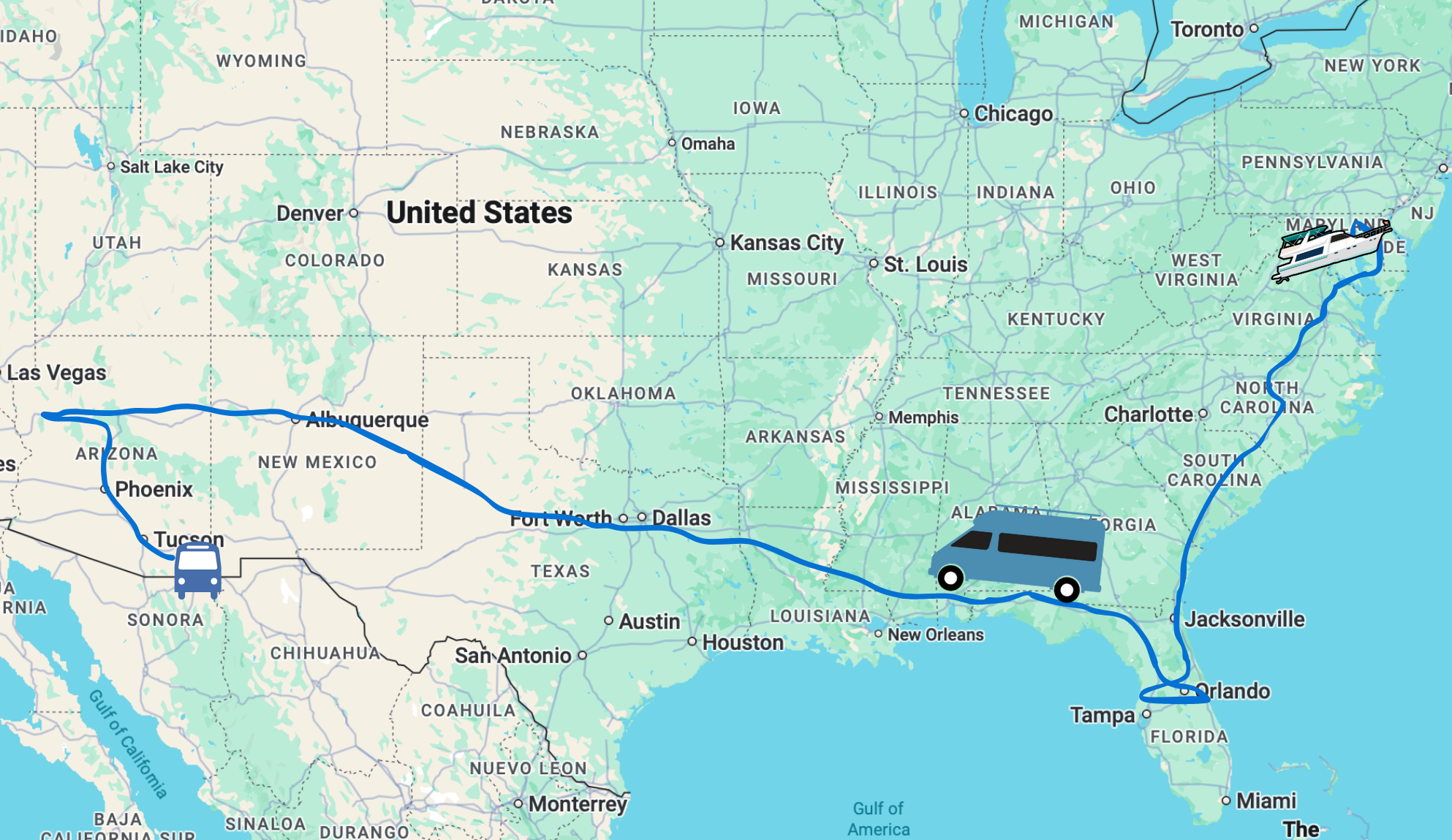
Soon ( if the renovators ever finish) I will be full time. I can’t tell you to the full extent how helpful/encouraging Technomadia is in taking the first step in this journey. I’m single so this is going to be an exciting change in my lifestyle. Your transparency and flexibility gives me hope that everything is possible. Keep up the great work!
Read your blog regularity and appreciated the helpful thoughts on repositioning – just did the trip from Flagstaff to St Augustine mostly state highways staying at state parks. Am the only driver (Hubby has glaucoma but is a fabulous planner and can see maps on iPad). Did abt 120-250 miles/day staying 1-3 days depending on what we wanted to do at the stopping point. Find it very helpful to read your & other bloggers views as we work out what works best for us. Thanks for making the time to write and share – as newer travelers and very new bloggers we’ve come to appreciate how hard it is to make the time to write after driving all day. Hoping to make the Vermont escapees event.
Thank you so much for this informative video. I think we are overdue in purchasing your RV mobile internet handbook as we end up with poor cellular and WiFi signals all the time! We are planning on driving to Louisiana this fall and leave our RV there (out of the snow) until just after Christmas and spend New Year’s eve there. My plan (my poor husband abdicates to me) is to drive West including the Baja Peninsula. My questions are: Have you ever gone down the Baja Peninsula? Do you have any does and don’ts as far as going there? Would you and/or any of your viewers like to join us in a caravan for increased safety?
We have not yet made it down to Baja… it’s been on the bucket list for a while now, so perhaps we’ll get down there sometime. If you’re interested in a caravan down there, check out the Escapee’s BoF group that does this every year. Probably some great resources there.
Cherie and Chris, great blog, thanks for sharing!
Hi Cherie,
I really liked reading your blog about repositioning. We are full time now for almost 2 years and have enjoyed learning about full time RV-ing from you and RV Geeks. We are MIA members and bought a WeBoost and like the additional cellular strength. We are looking forward to you findings on cellular antennas. Thanks for your generosity in sharing and look forward to your posts.
Bob and Michelle
Thanks for sharing the planning a day’s drive. We plan on full timing in a few years and can’t wait. Your website is one of our favorites. Chris…. also like the shirt you wore on the day’s drive video
Nice! thanks for sharing your “ups and downs” and how you create (or at least try to maintain) balance.
Enjoy your vacation!
Great post! Still amazed that your tanks were dumped twice in 7 weeks! Love that upgrade you did! Any other secrets? I don’t think we can last 5 days…
Enjoy your cruise and everything Montreal has to offer. It’s a beautiful city!
Here’s our article on conserving water that might help: https://www.technomadia.com/2015/01/back-to-boondocking-extending-the-holding-tanks/
Cherie and Chris,
Bubba and Toots (Greg and Laura) stay glued to the computer (a new Mac Book Pro!) to watch your livestream events, and I love reading your blog. We are getting closer and closer to our planned full timing gig and I read a LOT of blogs so I can get a good feel for what life will be like. I think our ways of handling things are just like you two, me the planner (Toots) and Bubba is the free spirit. I can so relate to everything you say. So, THANK YOU so much for everything. This post was particularly helpful and inspiring. It definitely has me thinking about not only the destination, but how to get there. The destination is not just “the destination” it is actually one stop of many along the road, so looking at each stop as a new adventure is what appeals to me. WE LOVE YOU GUYS and someday hope to meet you in person.
Full timing really does change your perception of ‘getting there’ :). Enjoy the journey!
I’m new to your blog and You Tube (and to posting). I just watched the Sucky Side to full time RVing …and love it! Your information is very, very helpful. I’m a single woman thinking of venturing into the RV life style. I’m over 55 and was searching for any posts you might have made on RV security w/cameras and different options available. Does anyone has any suggestions you could pass along?
Hi Nancy – We do have a post on our thoughts on Safety that you can find in the No Excuses series (www. technomadia.com/excuses) – but don’t have any posts specific about products, etc. You’ll probably get an idea as to why after reading the article 🙂
I love your blog and love the way you guys travel!
How do you label the pins on your maps? I make maps w/Google Maps and can name locations, etc. but haven’t been able to label pins…you know…A,B,C, etc.
I really like the way yours work.
This particular map was done in Google My Maps.
Great post. Thanks. We are heading in the opposite direction soon to reposition out west. Do you have — or have I missed it — a list of the roads you took. Sounds like a great route.
If you click on the article for each stop, I included a map of the route we took for each segment. We don’t list the exact roads and such (too tedious 😉 ), but it should give you a decent idea.
Just started following you, greetings from Tom and Cheryl in our 2005 Miss Journey. Was delighted to read your re-positioning blog and the route details. We also are in Desert Hot Springs, just down the road at Sands RV & Golf. Next year we are going to follow your route to Florida, and agree with your 200 in at 2, stay 2, and leave from here to Quartzite in February. Looking forward to following your blog this summer as we sit by the ocean in Copalis Beach Wa, then back to DHS in September. Thinking of heading east from WA in a big arc, taking our time. I found so many things I agree with in your Blog, made me happy! Safe travels and cheers;
Cheryl
Nice post! I am an analyst type (even in my career) and I LOVE the post trip analyses that you give. I have a question about driving a big rig through/around big cities. Have you ever planned to drive through the middle of the night to avoid traffic in a metropolis area? Looks like that would be a safe & less stressful way to get through. I know when I’ve driven through Minneapolis on a trip, in my car, it can be a hair raising experience, I don’t think I’d want to tackle that with your rig. Last year, I chose a country route to avoid it totally, and enjoyed the serendipity of the trip. Perhaps in your East trip, that might be a thought.
We have occasionally done big cities at late night when in ‘making miles mode’.. and it is definitely a great way to avoid traffic. It’s also a great way to mingle with drunk drivers.
In general, we try to avoid it – and prefer to be parked and setup by mid-afternoon. Late night arrivals at campgrounds isn’t generally considered polite to the neighbors.
Instead, we try to avoid rush hours for big cities, or route entirely around them if we can.
Outstanding work as always. We too are traveling cross-county and like your 2-2-2 method. Right now we are doing more of a 2-2-5 approach. I appreciate your work and insights. Thanks.